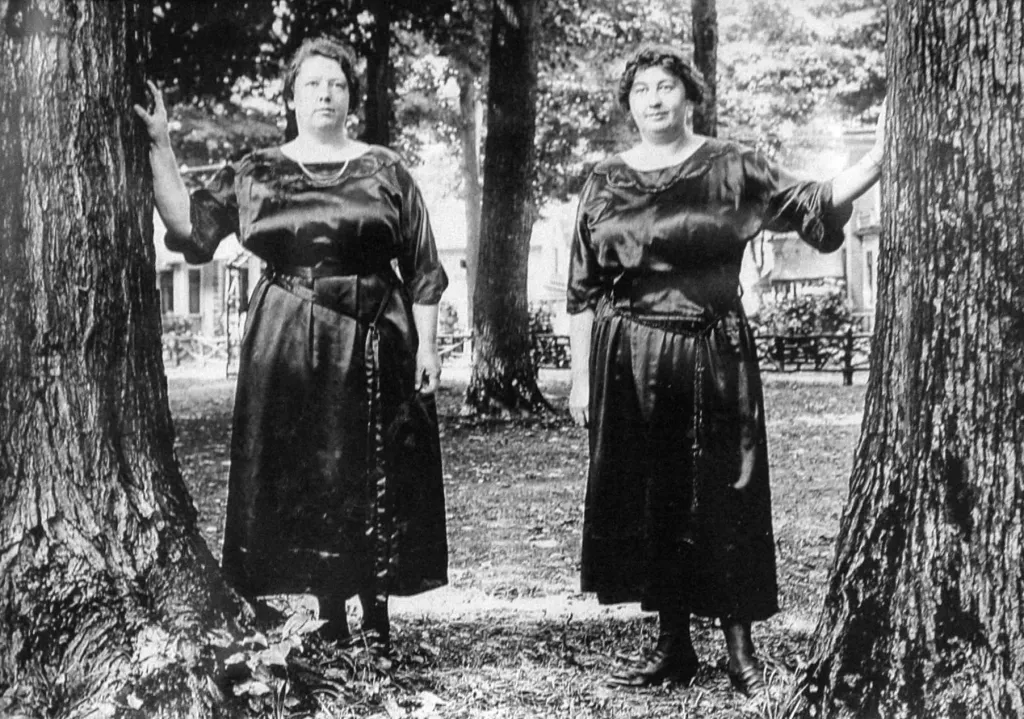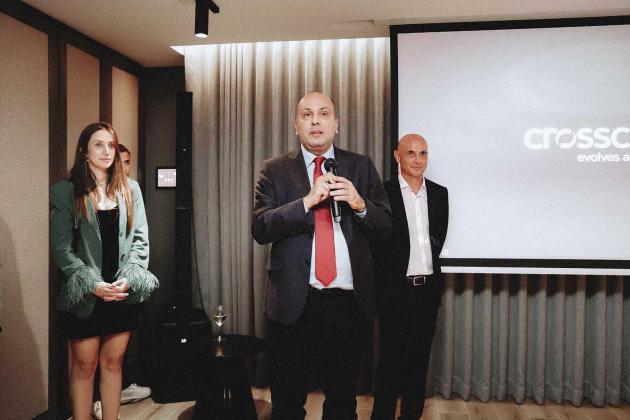Copyright Chicago Tribune

Among the “Sunday Church Services” listed in the Oct. 9, 1887, edition of the Tribune appeared more than half a dozen under the heading “Spiritualists.” These “services” included lectures with titles like “The Regions Beyond,” hosted by the Association of Christian Spiritualists, and demonstrations by a range of individuals claiming to possess the ability to communicate with the dead. That spiritualist services appeared within a list of more conventional sermons by Chicago’s various Protestant ministers showed how seriously this new faith was taken by its adherents. In a country contending with the trauma of a civil war that had claimed hundreds of thousands, a belief in a region beyond, populated by the dead but accessible to the living, offered comfort. American spiritualism traces its beginnings to a time before the Civil War when two sisters in upstate New York claimed to be able to communicate with a spirit haunting their house. Seated with others around a table in a darkened room for what is called a seance, sisters Maggie and Kate Fox summoned the spirit, who communicated by rapping on the table. A third sister, Leah, sensing the commercial appeal of such otherworldly experiences, took the act on the road. Soon “mediums,” the term given to people like the Fox sisters who purported to contact the dead, began making their abilities known across the United States. Chicago in the post-Civil War decades had its own version of the Fox sisters. That same Sunday 1887 edition of the Tribune advertised “slate-writing by the Bangs sisters.” Slate-writing improved upon table rapping. Instead of interpreting random sounds, mediums could now manifest the written words of the dead in chalk upon a piece of slate. This could be done by the spirit taking direct control of the medium’s hand, a process called automatic writing, or by words appearing magically upon a blank piece of slate. Elizabeth “Lizzie” Bangs and her sister, Mary “May” Bangs, had started out leading seances while they were teenagers in the 1870s. By the early 1880s, they had added slate-writing to their repertoire. Over their almost half-century career as mediums they continued to alter their practice to align with whatever method of contacting the dead proved popular. Their story represents the history of American spiritualism in miniature. The Bangs sisters’ parents, who had brought them and two older sons from Atchison, Kansas, to Chicago in the early 1860s, played an active role in Lizzie and May’s careers as mediums. By the late 1880s, the sisters had gained a large enough following to move from holding seances at their house on Walnut Street to renting the Princess Opera House on Madison Street for Sunday services. These services made use of another innovation in spiritualism, the spirit cabinet. A wood-framed box covered in heavy cloth on the back and sides, with locking doors on the front, the spirit cabinet offered a medium a place of retreat. Within the cabinet, the medium went into trance and then physically manifested spirits who could exit the box and interact with the gathered believers. A Tribune reporter attended one of these services in early January 1888. While Lizzie cranked the handle of a music box and sang religious hymns off-key, May, locked in the cabinet, made a series of spirits appear before at least a dozen people gathered in the darkened opera house. These spirits included a mustachioed boy named “George,” a dancing “Spanish girl” named “Belle” who’d been dead for over a century and even a “Russian princess” who spoke in an unintelligible tongue. “Altogether it was the shallowest and cheapest fake imaginable,” the Tribune reporter wrote. “It seems there is absolutely no limit to human credulity.” Regular attendees felt comfortable enough to approach the spirits and inquire about deceased loved ones, the reporter observed. In some cases, the deceased loved one appeared within the procession of more familiar spirits. Contact with the dead came with a cost that afforded the sisters a comfortable Victorian lifestyle. The Tribune reporter estimated the sisters might have earned $10 a week just from one man who attended nightly to talk to his departed daughter. A few months afterward, Col. John C. Bundy, owner of the Religio-Philosophical Journal, a publication devoted to the serious study of spiritualism, asked the Bangs sisters to stop with the Sunday spirit cabinet services. A Civil War veteran and amateur scientist, Bundy thought mediums like the Bangs sisters preyed on grief-stricken people and tarnished the sincere exploration of an afterlife. The sisters rebuffed Bundy, but soon two undercover Chicago police detectives disrupted a service, pulling a spirit from the cabinet and revealing it to be May Bangs wearing a mask and costume. Among the evidence seized was the mustache belonging to “George.” The sisters faced charges of “obtaining money under false pretenses and running a place of amusement without a license.” This raid and another incident, a month prior, might have put an end to the Bangs sisters as spiritualists. One of their regular clients, a wealthy German immigrant photographer named Henry Jestram, had suffered a mental break, disappearing one day only to be found later that night “stark naked in a butcher shop talking with a spirit whom he called ‘George.’” Earlier, Jestram became convinced the Bangs sisters were able to summon the spirit of August Spies, one of the executed anarchists associated with the 1886 Haymarket tragedy. Jestram learned slate-writing from the sisters and, believing himself to be in direct communication with the dead, received dire warnings foretelling disasters that would harm his family and property. The sisters downplayed any connection to Jestram after his breakdown, and after this brief period of scandal they resumed giving seances, targeting those with wealth. Two of May Bangs’ four marriages resulted from messages received by a grieving son and a widower, respectively, in which the dead proclaimed her an ideal spouse. When the money ran out, so did the marriages. After 1900, most wealthy believers supported the sisters by purchasing a “spirit portrait,” or a painted image of a dead loved one that appeared almost instantaneously on previously blank canvases. As always, the sisters changed with the times. Among those who purchased several spirit portraits from the Bangses was the minister and lexicographer Isaac K. Funk, one of the founders, along with Adam Willis Wagnalls, of the publishing company that bore their names. Like Bundy before him, Funk explained his interest in spiritualism as purely scientific. Nebraska-based business owner and amateur magician David Abbot took an interest in spirit portraits and published findings in 1913 claiming to explain how the sisters created them. In almost all cases, they had a photograph of the deceased in their possession prior to the creation of the painting. Sometimes the technique was as simple as a blank canvas stretched over a painted one, with the image revealed through sleight-of-hand. As their techniques became more refined, the sisters used chemical agents and rear projection, or so Abbot thought. Within a year of Abbot releasing his findings, the mass slaughter of the first World War would prompt a renewed interest in spiritualism. In the 1920s, magician Harry Houdini filled Chicago’s Orchestra Hall exposing the techniques used by a new generation of mediums. By then, Lizzie and May Bangs had already made their own move to the regions beyond.



